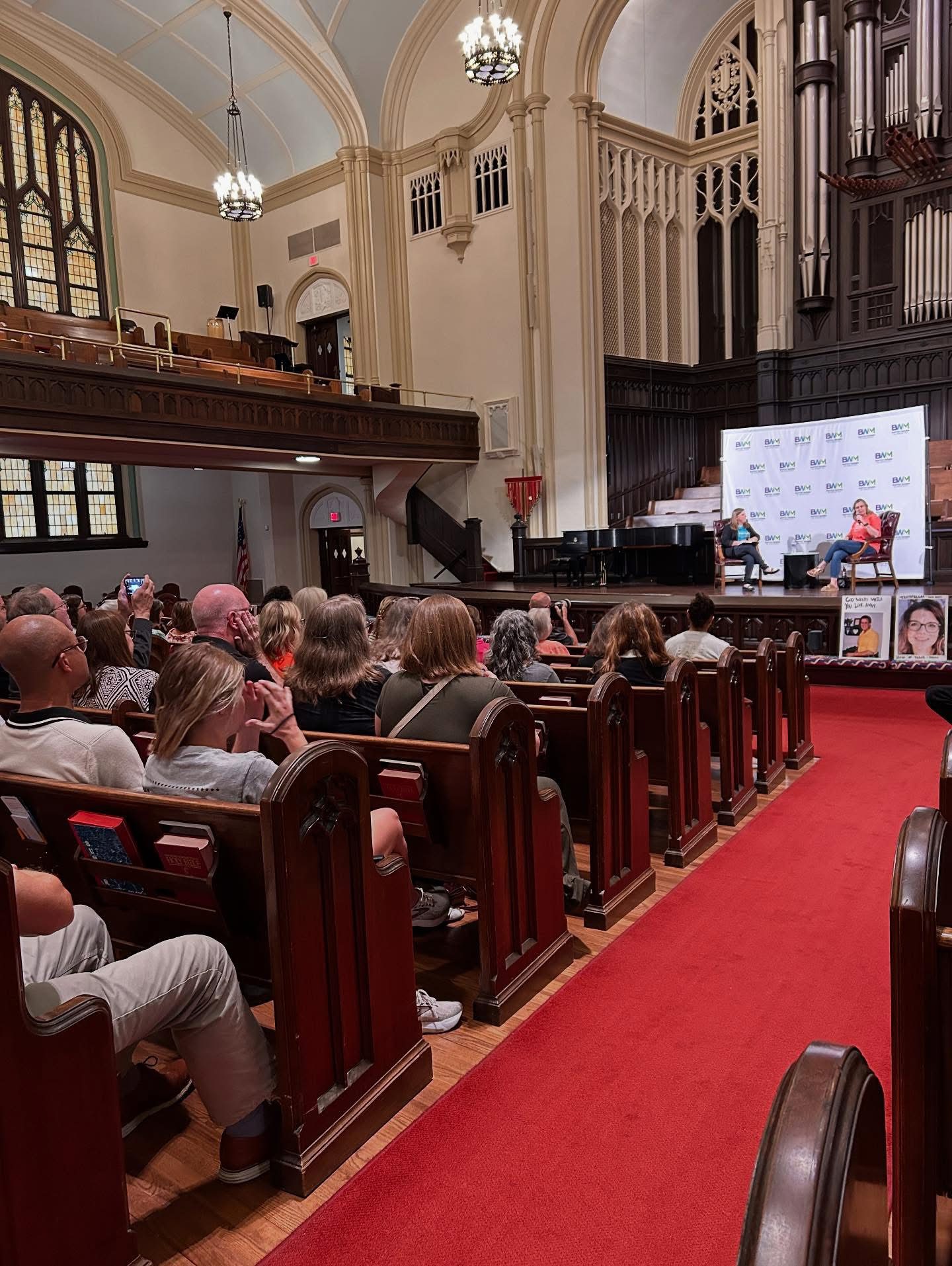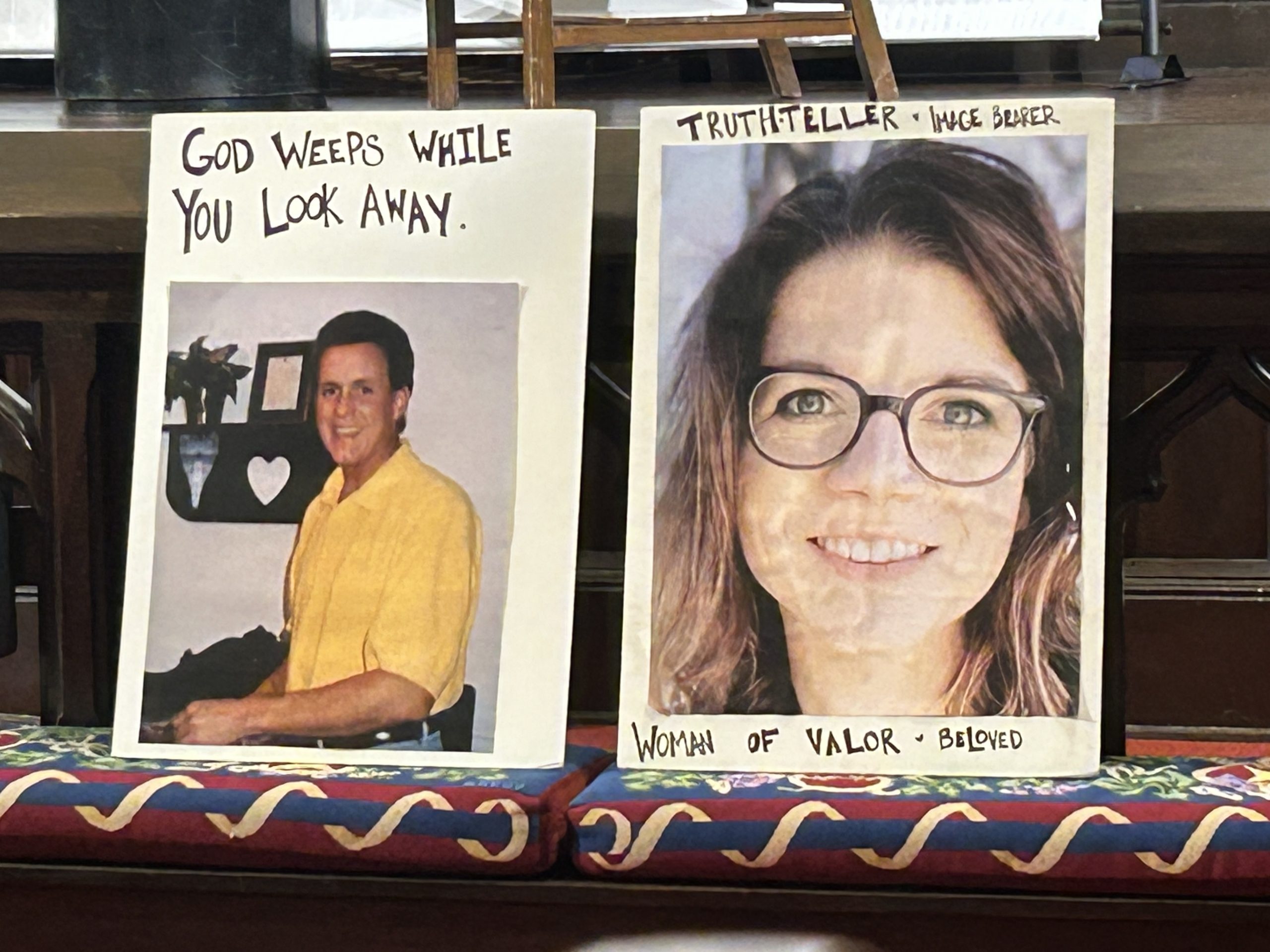Baptist Women in Ministry reflect on SBC women
DALLAS—Baptist Women in Ministry, a national organization committed to advocating for the full affirmation of women in ministry in Baptist life, met soon after the close of business on the first day of the Southern Baptist Convention annual meeting.
Under the shadow of another slate of attempts to restrict female ministers in the SBC, the group gathered at a Methodist church around the corner from the convention center housing the convention.
They heard a conversation between BWIM Executive Director Meredith Stone—who also serves as interim preaching pastor in a Baptist church in Texas—and Beth Allison Barr, history professor at Baylor University, pastor’s wife and best-selling author of The Making of Biblical Womanhood and Becoming the Pastor’s Wife.

Both Stone and Barr had attended the Pastors’ Wives and Women in Ministry Luncheon, held at the convention earlier in the day, and the SBC business sessions.
Barr noted while she’d been to local and state meetings of Baptists, it was her first time to attend an SBC annual meeting in person. However, she has researched the meetings and Southern Baptist history related to women in ministry extensively.
Giving her impression of the event as a historian, Barr said she found it “fascinating” to watch the messengers conduct the business of the meeting and to observe the banter.
As a pastor’s wife, she said she saw it as “somewhat hopeful,” pointing out that for some time she’s thought, if anyone might save the SBC or help it evolve into something else, “it’s going to be women and pastors’ wives.”
But she also noted, as someone who “believes God does not limit ministry calling by gender,” the meeting was “depressing.”
“It’s one thing to read the words of men standing up and … questioning what women can do in the church, and it’s another thing to hear them do it from a microphone on the floor and have the whole row behind you start clapping,” Barr said. “That is something else entirely.”
The women addressed a motion made from the floor of the SBC annual meeting calling for a task force to clarify what Southern Baptists believe women can do, “all the way down to ‘can they teach mixed Sunday school classes.’”
They noted the motion read like a lengthy list Wayne Grudem wrote in the late 1990s itemizing more than 80 things women can or cannot do in church.
Jared Long of Georgia made the motion, calling for a study committee to draft a potential standalone confessional statement for consideration at the 2026 annual meeting.
His motion is distinct from the Law Amendment—a failed constitutional amendment that would have barred from the SBC any church with a female pastor.
Long’s motion calls for a standalone document on women in Southern Baptist ministry that would “bring clarity to the role of women in ministry leadership within and beyond the local church.”
He called for the document to serve as a “theological and pastoral resource,” building on prior convention action and the 2000 Baptist Faith and Message.
Long requested the document to offer “clear, Scripture-based positive and negative affirmations, addressing but not limited to the biblical definition and responsibilities of a pastoral office; what distinguish[es] the [office] of a pastor from other ministry roles and the nature of a chaplain …; whether woman may teach mixed-gender classes, or preach under pastoral authority …”
He also called for the document to answer “whether women may serve as entity presidents, trustees, seminary professors, endorsed chaplains or denominational leaders.”

And, he said, the document also should address “the roles of women on the mission field—including the appropriateness of serving as single team leaders or in positions of spiritual authority and related questions concerning women’s leadership in formal ministry contexts.”
Barr observed, “It was shocking to hear somebody on the floor start reading that out loud—as if this was reasonable—and that was really shocking to me.”
In some ways, she said, her experience at the Pastors’ Wives’ Luncheon was similar to the luncheons and other Southern Baptist programs and events for women she researched for her book.
Historical background of the Ministers’ Wives luncheon
“It really started out [as] a conference for pastor’s wives that grew into the focus on the lunch and the tea and then grew into a program. And now that program is kind of separated into two parts, where they have the pastors’ wives and women in ministry conference and then they have the pastor’s wives’ lunch.”
She explained the programs were started in the 1940s and 1950s to encourage pastors’ wives in ministry, because ministerial wives at the convention were commenting on how difficult the job was—being thrown into a position—being expected to do things at the church with no understanding of the expectations and that they weren’t necessarily prepared for.
So, SBC women began the luncheons to have a place to encourage other women, “and that’s what I saw today at the Pastors’ Wives luncheon,” Barr said.
The luncheon program was about taking mental health seriously and encouraging pastors’ wives to take care of themselves—which was exactly what they needed to hear, Barr noted, “and I found that really encouraging.”
It reflects the same culture she saw in the archives, where the luncheon is a place to encourage women in a really challenging position.
Stone said she realized something being at the luncheon and conference.
“When you think about the Southern Baptist Convention a lot—what’s going on there—you forget sometimes about the faces and people,” she said.
Being there was a reminder of “how deeply women in the Southern Baptist Convention want to follow Jesus and want to be faithful,” and, Stone said, she wants them to find freedom.
Barr agreed with the observation that thinking about the Southern Baptist Convention can make it easy to “forget about the women who are honestly just wanting to serve God,” but live in a space where they “haven’t been taught they can do something beyond.”
The women sat with a “delightful” young woman who serves as the leader of the youth ministry at her church at the luncheon, and they said they had a great time with her.
SBC women are doing the best they can with what they have, Barr asserted, but she hopes to “expand their horizons about what is possible in the kingdom of God.”
A striking change
Stone observed the women who spoke at the conference spoke of the ministry work they were doing in reference to a husband or father.
“It was always in reference to a man,” where the women didn’t have agency or independence, she noted.
Stone asked Barr what she thought it might do to a woman to live that way, without autonomy, where they didn’t talk about what they were doing, but only what their husband was doing.
Barr said Stone pinpointed a “striking difference” between the historic women’s conferences and the one they attended. Those early luncheons were designed for women to share about and celebrate the independent ministry of women.
The founding women emphasized they weren’t concerned with “who your husbands were.” The luncheons were about the women.
For most of its history, the Willie Dawson Award—essentially the SBC pastor’s wife of the year award, she explained—was given for the ministry the recipient was doing, either in her church or at a state or national level.
The award itself had started out as the Mrs. J.M. Dawson Award but quickly was changed to the Willie Turner Dawson Award.
Even when the wife of a prominent convention minister in the 1990s complained about not having received the honor, the president of the luncheon’s response was: “I’m sorry she was offended, but what we do here is recognize women for what women do, not for what their husbands do.”
Barr noted this shift clearly shows “what complementarian theology does to the psyche of women.”
“When you have lived in a space where you are taught that your value and what you are called to do centers around men—that’s the definition of patriarchy, it centers men— … [and] to put her husband always above herself, it effects the way that women think of themselves,” Barr asserted.
The women discussed concerns they’d observed with SBC actions this year, as well as identifying theological inconsistencies and additional changes and historical fallacies damaging to women that the SBC has embraced over time.
Some of these are covered in Barr’s published books, and others will be in her next release.